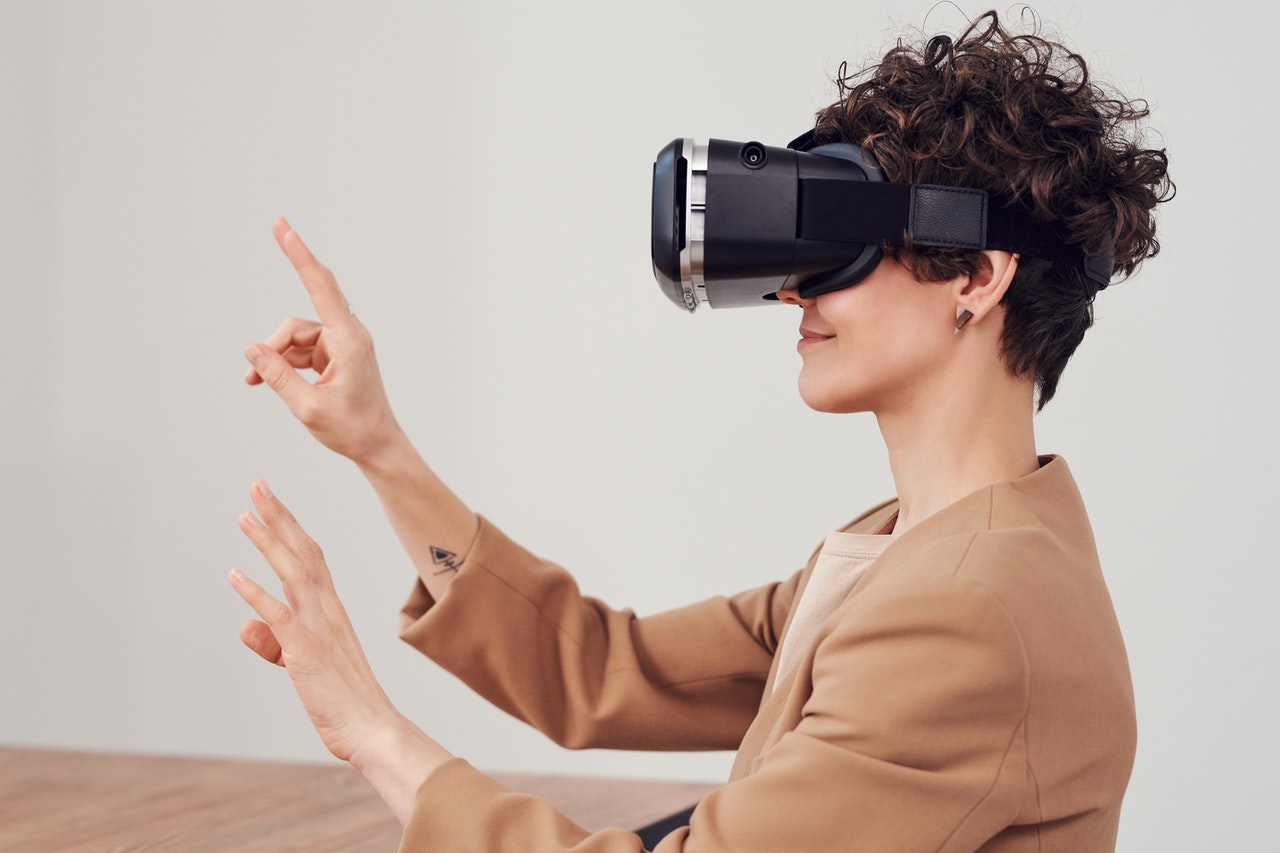These days, augmented and virtual realities are critical components for businesses. Many business projects are benefiting from AR and VR. There are also a variety of training programs available to teach people how to use them.
In this section, we’ll look at how AR and VR can help businesses in various dimensions improve. You’ll need both your vision and your imagination to comprehend these changes. The article will go over current AR/VR use cases and how these two technologies can help your business.
Defining Augmented Reality’s Practical Uses
AR applications appear to be moving toward more practical business applications. Lacoste, a sportswear company, for example, provides an app that allows in-store buyers to place their foot on a specific point to view the shoes of their choice via their smartphone, displaying product details, custom sizes, and how it would look on customers.
The New York Times used an augmented reality app linked to the 2018 Winter Olympics to allow users to bring up athletes on the screen to explain their moves as they happened.
Furthermore, companies such as Warby Parker (virtual eyeglasses try-on) and IKEA (virtual furniture installation in rooms) enhance AR experiences without requiring specialized hardware.
VR in reality practice
We live in a time when virtual reality is becoming more than just a theory. Google, Facebook, Samsung, HTC, Huawei, and other tech behemoths create VR devices that bring realistic worlds to life.
For a few years, smartphones and headsets were the most common way to deliver a VR experience. This has been the most convenient way for consumers to experiment with virtual reality. The virtual reality industry is far more developed than the current augmented reality industry.
The necessary software tools and hardware platforms for creating an engaging VR experience are now available.
Because of the availability of more complex systems like the Oculus Rift, which is combined with 360-degree video, virtual reality experiences are increasingly finding new ways into our lives.
Role of VR in the military
Armies all over the world are using virtual reality (VR) for battlefield and combat training. Virtual reality can provide a realistic digital replication of complex environments, allowing soldiers to learn how to engage with the enemy while also dealing with external factors such as the presence of civilians and varying conditions such as different times of day and weather challenges. Soldiers can learn how to handle high-stress situations and improve a variety of skills, from effective communication to critical combat techniques, by participating in VR training.
It can also help them learn how to deal with hostile situations like suicide bombers or sniper attacks.
VR is being applied to military training programs that focus on a trainee’s ability to use specific equipment in their work, from haptic VR guns to armored vehicles, submarines that launch virtual torpedoes, and beyond.
The Royal Navy is also using virtual reality as an orientation training tool. Prior to boarding the Queen Elizabeth Class (QEC) aircraft carriers, crew members can become acquainted with the ship’s layout, including the location of critical safety equipment as well as escape and evacuation routes. The training program also assesses the user’s ability to respond to emergency scenarios such as dealing with casualties, fires, and hiring pressure leaks.
Role of VR in business
People frequently associate VR with gaming and headsets. However, virtual reality (VR) is a technology that has real business value as well. Today, an increasing number of businesses are developing new and innovative techniques to incorporate virtual reality (VR) into their routine business processes in order to make their operations more productive and efficient.
Although it appears that the gaming industry is the primary beneficiary of this technology, VR is not limited to a single domain or vertical. Virtual reality has already caused havoc in a variety of industry sectors, including healthcare, travel, and business.
Impact of VR in sports
Sports is one of the areas where technology is being used most effectively and aggressively. We’re already accustomed to seeing augmented reality (AR) in sports. Consider watching football without a projected first-down line or watching hockey without puck tracking.
With the recent surge in VR adoption, the sports experience is being amplified and made more immersive in nearly every possible field, from consuming content to training and recruiting athletes.
In most cases, all you’ll need is a VR headset and an app to be transported to the stadium and look around for yourself as the action unfolds, all without leaving the comfort of your own home.
Psychological therapies delivered in virtual reality (VR) may provide a solution. Here are three ways virtual reality could revolutionize mental health treatment.
“On-the-spot” coaching
The most effective therapeutic interventions assist people in changing the way they think, react, and behave in the situations that they find most difficult. When we are in the same physical or mental state as when the memory was formed, we tend to remember it better. Because of factors such as cost and time, such active “in-person” coaching is uncommon in mental health services. This is where virtual reality can help.
Flexibility
Not only is virtual reality more practical, but people are generally more willing to enter virtual versions of situations that cause them anxiety because they know it’s only a simulation. It’s also easier to experiment with things that would be too scary or embarrassing to try in real life.
Automation
The ability to automate VR therapies is perhaps its most significant advantage. This means that in VR, you may be accompanied by a virtual coach who explains the therapy and teaches you the psychological techniques to try.
VR in medicine
Medicine has always been one of humanity’s most important industries. That is why scientists and technological innovators continue to work tirelessly to provide the healthcare industry with more accurate and effective solutions. Revolutionary technology not only saves lives but also allows them to be extended.
VR technologies have emerged as a promising field for improving medical training and therapy precision. For example, research has shown that using VR applications for laparoscopic surgery training improved educational quality in 74% of studies. Furthermore, 87 percent of studies found that specialists who trained with virtual reality improved their operational accuracy.
VR in Education
No technology can completely replace human interaction, but it can improve it. Virtual reality in education is being widely adopted by almost all students of all ages
Virtual reality is an excellent tool for providing students with a new perspective and real-life experience of the subject matter they are studying without requiring them to physically visit the location.
This can also provide students with firsthand knowledge of past events and allow them to examine them while still in their classrooms. Not only that, but students can have a virtual projection of their career options and engage in creative activities to make themselves more suitable in terms of skills and values.
Role of AR in Retail
Augmented Reality (AR) applications are becoming more popular, with virtual “try-before-you-buy” experiences ranging from previewing furniture and products in your home with everyday brands like IKEA and Home Depot to virtually trying on luxury fashion brands like Louis Vuitton and Gucci. AR, which was once considered a nice-to-have feature, has quickly evolved into a must-have technology for retailers.
AR in Navigation
The use of AR for navigation means it is a technology used to understand the physical environment and add virtual components, where those objects also follow the rules of physics so that objects displayed on a screen are visually comprehensible. Often, computer vision is used as part of that enhancement through techniques such as segmentation that detect and identify objects such as pedestrians, buildings, or other objects needed to inform navigation devices.
AR in Healthcare
More life sciences companies are utilizing augmented reality (AR) to develop new therapies by fusing the virtual and physical worlds. AR aids in the creation of rich, interactive experiences that demonstrate how new drugs and medical devices interact with the body. Using this disruptive technology, brand teams and content providers can provide a better way for their field force to engage healthcare professionals (HCPs). AR can also help HCPs explain new treatments to patients in a more illustrative manner.
AR in Customer Support
Product visualization – Using augmented reality to visualize objects can help businesses interact with customers in novel ways. AR/VR creates unrivaled experiences that expand product capabilities, provide more information to consumers, and increase customer loyalty.
AR differs from VR in that it allows users to see and interact with computer-generated objects that are layered on top of the real world. In the retail industry, augmented reality allows customers to see what a product might look like in their home before purchasing it.



